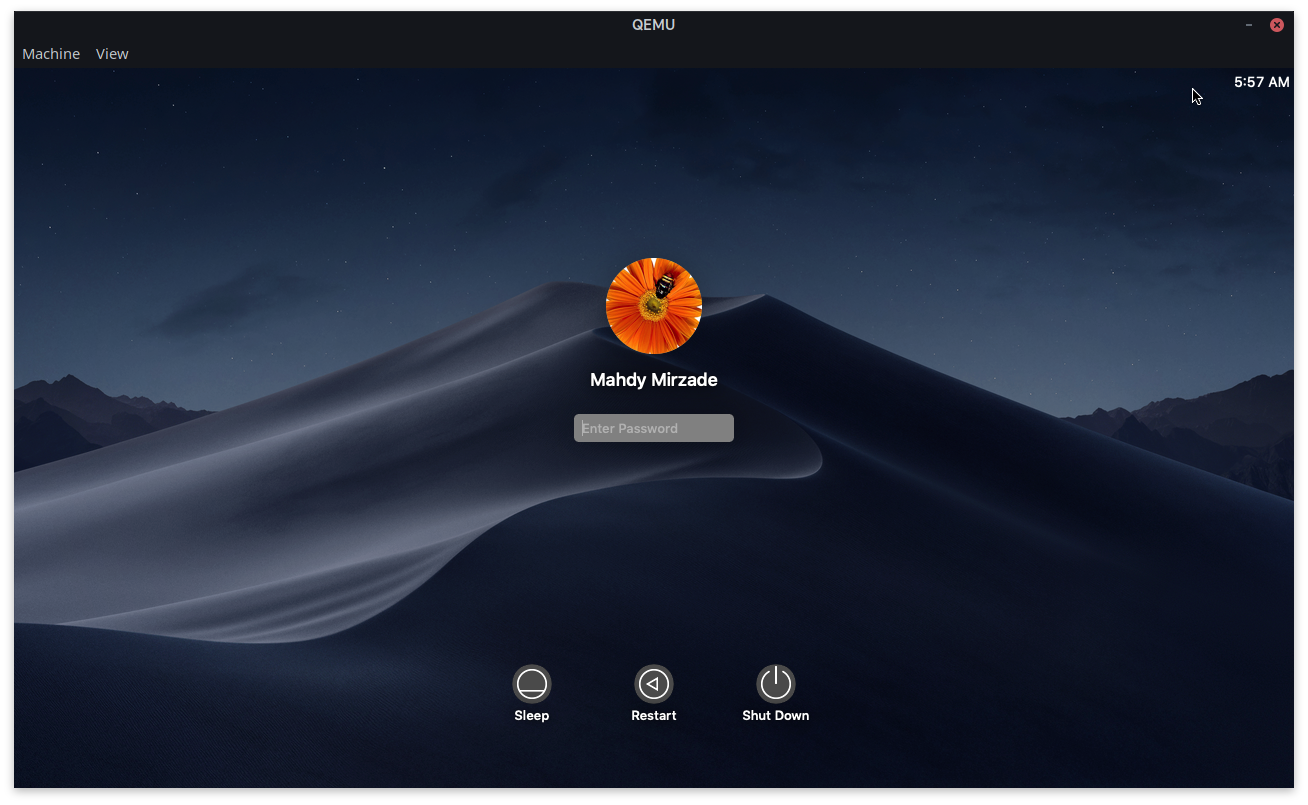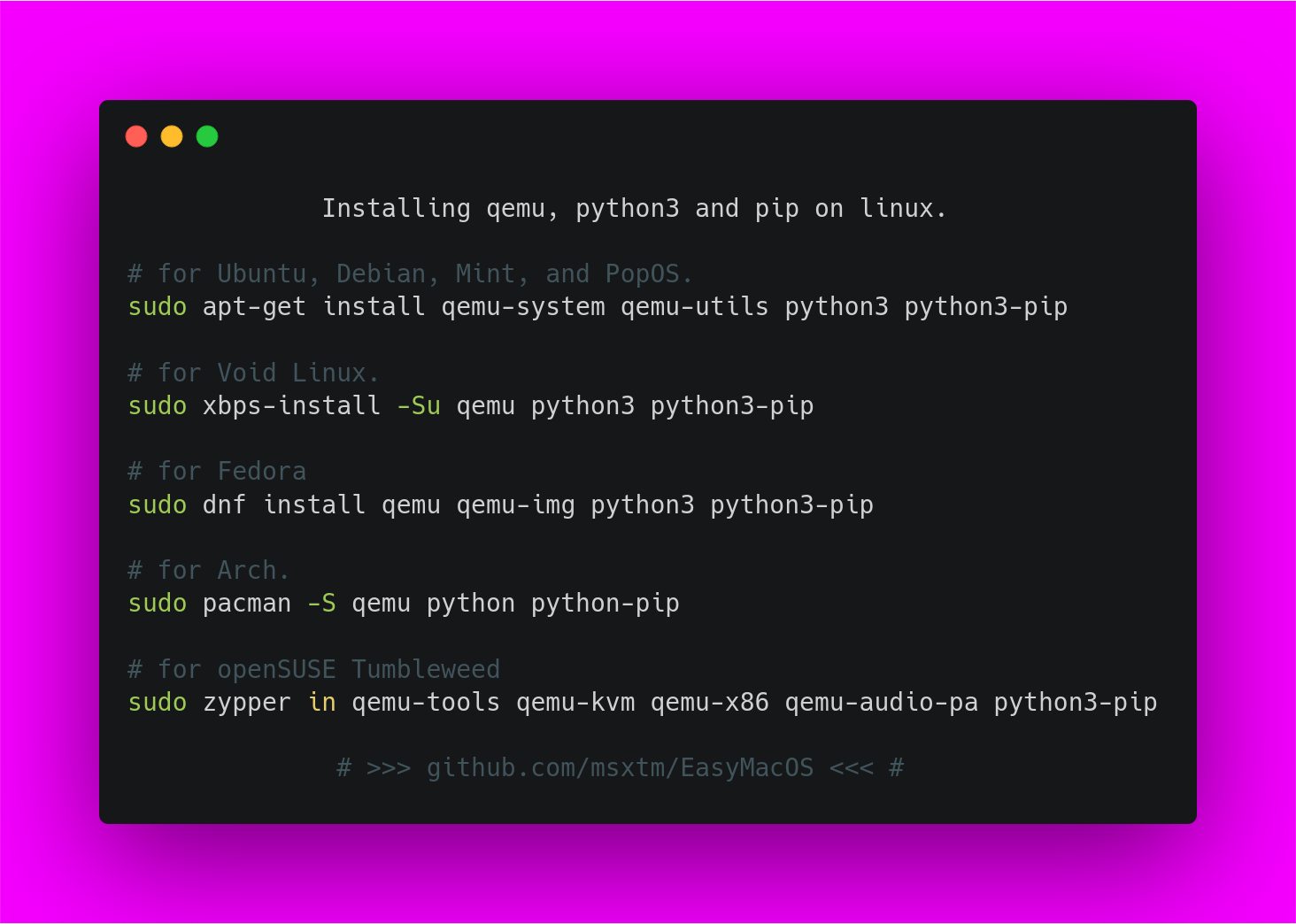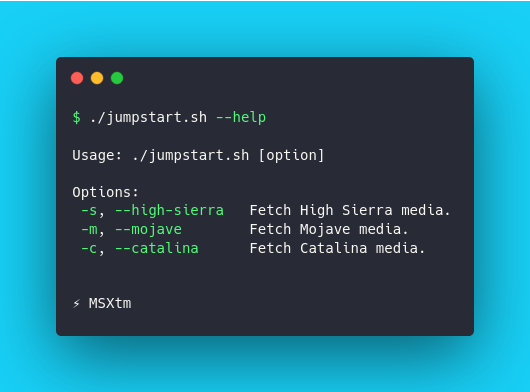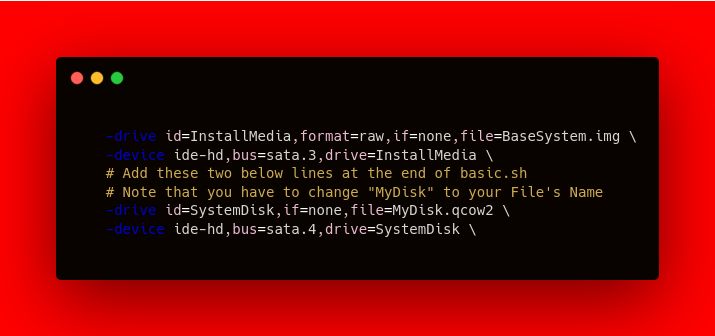Read this documentation to set up a simple macOS VM in QEMU, accelerated by KVM.
New to macOS and KVM? Check the FAQs.
Want Installation Toturials? 🇦🇺 English(Global) | 🇮🇷 Persian : ❌
You'll need a Linux system with qemu (3.1 or later), python3, pip and the KVM modules enabled. A Mac is not required. Some examples for different distributions:
To Install your own MacOS, You have to follow these steps.
Run jumpstart.sh to download installation media for MacOS (internet required). The default installation uses Catalina, but you can choose which version to get by adding either --high-sierra, --mojave, or --catalina. For example:
./jumpstart.sh --mojave
Note: You can skip this if you already have
BaseSystem.imgdownloaded, But if you haveBaseSystem.dmg, you will need to convert it with thedmg2imgtool.
Create an empty hard disk using qemu-img, changing the name and size to preference:
qemu-img create -f qcow2 MyDisk.qcow2 32G
and add it to the end of basic.sh:
-drive id=SystemDisk,if=none,file=MyDisk.qcow2 \
-device ide-hd,bus=sata.4,drive=SystemDisk \
Note: If you're running on a headless system (such as on Cloud providers), you will need
-nographicand-vnc :0 -k en-usfor VNC support.
Then run basic.sh to start the machine and install macOS. Remember to partition in Disk Utility first!
- If instead of QEMU, you'd like to import the setup into Virt-Manager for further configuration, just run
sudo ./make.sh --add. - After running the above command, add
MyDisk.qcow2as storage in the properties of the newly added entry for VM.
If you're using a cloud-based/headless system, you can use headless.sh to set up a quick VNC instance. Settings are defined through variables as seen in the following example. VNC will start on port 5900 by default.
HEADLESS=1 MEM=2G CPUS=2 SYSTEM_DISK=MyDisk.qcow2 ./headless.sh
You're done!
To fine-tune the system and improve performance, look in the docs folder for more information on adding memory, setting up bridged networking, adding passthrough hardware (for GPUs), tweaking screen resolution, and enabling sound features.
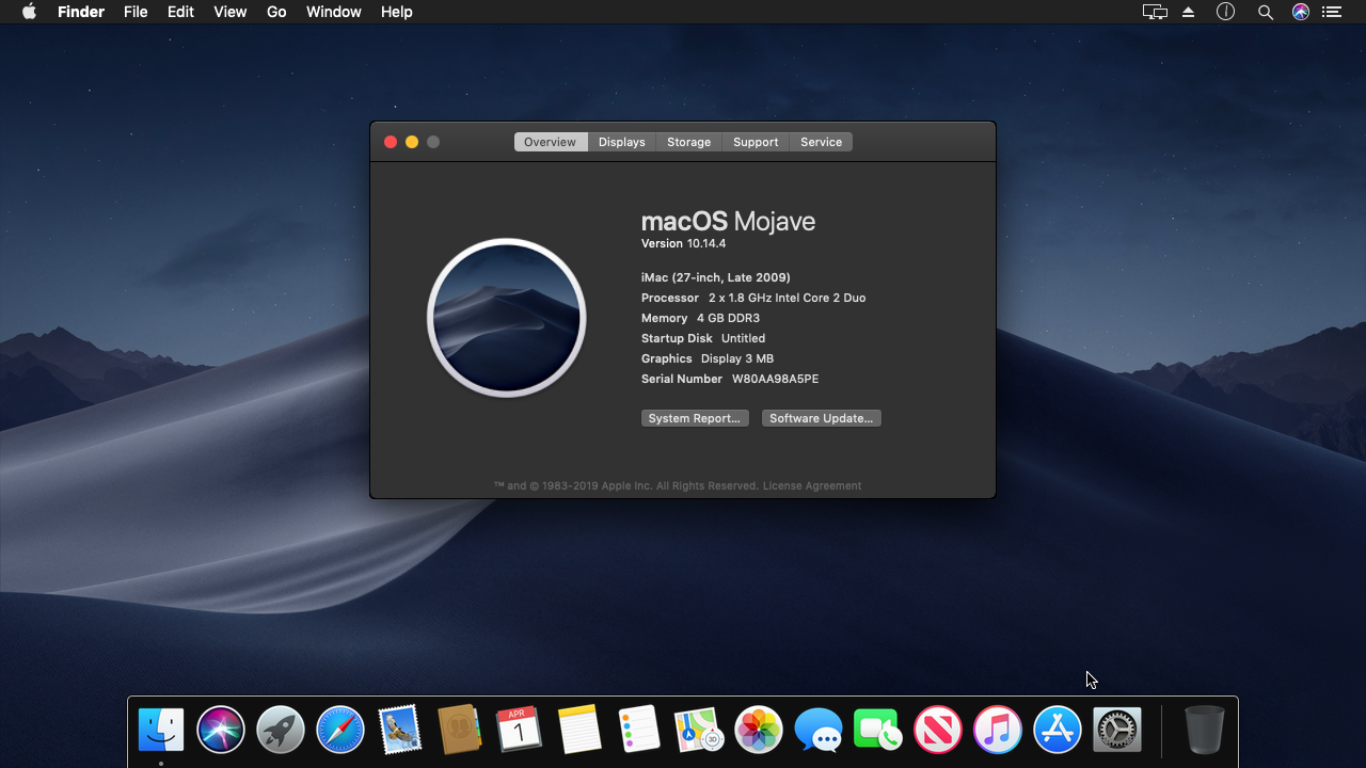
CopyRight: This project(macOS Simple KVM) is written By @Foxlet , But MSX has developed it to a cleaner, better and more helpful version as EasyMacOS, so you can enjoy!
